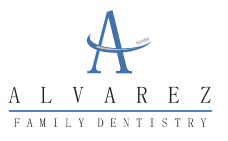1185 W Carmel Dr. #D2, Carmel, IN 46032

Choosing between Aligner Braces and Traditional Braces: Which Option is Right for You

In the world of orthodontic treatment, the choice between aligner braces and traditional braces often poses a significant dilemma for patients. Both options have their advantages and disadvantages, and determining which one is better for you depends on various factors. If you’re in Carmel and seeking orthodontic treatment, understanding the differences between these two options can help you make an informed decision. Let’s delve into the comparison of clear aligner braces and traditional braces, considering the perspective of a dentist in Carmel, particularly a cosmetic dentist.
1. Visibility:
Clear Aligner Braces: One of the most significant advantages of clear aligner braces is their nearly invisible appearance. Made of transparent plastic, they offer a discreet way to straighten your teeth without drawing attention to your orthodontic treatment. This feature is particularly appealing to individuals concerned about their appearance during treatment, especially adults and professionals.
Traditional Braces: Traditional braces consist of metal brackets and wires, which are highly visible. While some modern advancements like tooth-colored brackets have made them less conspicuous, they are still noticeable. For individuals who are self-conscious about their appearance, traditional braces may pose a concern.
2. Comfort:
Clear Aligner Braces: Clear aligner braces are custom-made to fit your teeth snugly, reducing discomfort often associated with traditional braces. They don’t have wires or brackets that can irritate the inside of your mouth. Additionally, you can remove them for eating and cleaning, enhancing comfort during daily activities.
Traditional Braces: At the onset, traditional braces might induce slight discomfort as your mouth adapts to the presence of brackets and wires. They can also cause irritation to the gums and cheeks, requiring wax or special dental products for relief. However, advancements in orthodontic technology have made traditional braces more comfortable over the years.
3. Treatment Duration:
Clear Aligner Braces: The duration of treatment with clear aligner braces varies depending on the complexity of your case. Generally, treatment with aligners may take slightly longer compared to traditional braces. Compliance plays a crucial role in achieving desired results, as aligners must be worn for at least 20-22 hours per day.
Traditional Braces: Traditional braces typically offer quicker results for complex orthodontic issues. The fixed nature of braces allows for constant pressure on the teeth, facilitating faster movement. However, the treatment duration can still vary based on individual factors.
4. Effectiveness:
Clear Aligner Braces: Clear aligner braces are highly effective for treating mild to moderate orthodontic issues, such as crooked teeth, gaps, and minor bite problems. They may not be suitable for severe cases requiring significant tooth movement or correction of complex bite issues.
Traditional Braces: Traditional braces are versatile and can address a wide range of orthodontic problems, including severe misalignments and bite issues. They offer precise control over tooth movement, making them suitable for complex cases that may not be effectively treated with clear aligners alone.
Conclusion:
When deciding between clear aligner braces and traditional braces, it’s essential to consider your specific orthodontic needs, lifestyle preferences, and aesthetic concerns. Consulting with a skilled dentist Carmel, particularly a cosmetic dentist Carmel, can help you weigh the pros and cons of each option and make an informed decision tailored to your unique circumstances. Whether you opt for the discreet appearance of clear aligner braces or the reliability of traditional braces, achieving a straighter, healthier smile is within reach with the right orthodontic treatment. Remember, regardless of the type of braces you choose, maintaining good oral hygiene and attending regular dental appointments are crucial for successful treatment outcomes and long-term oral health.




